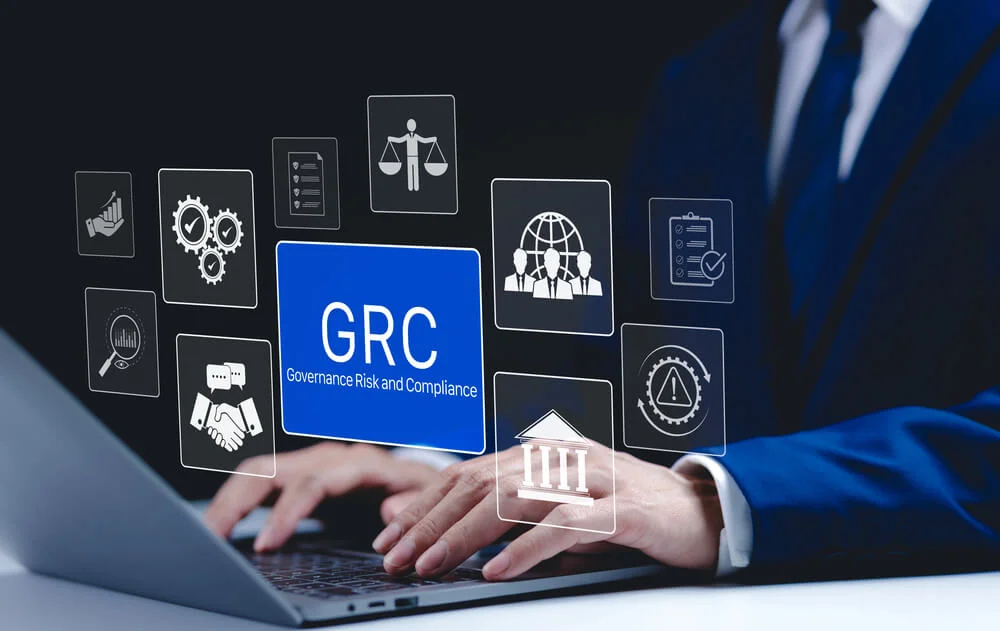Many organizations make the mistake of equating compliance with checking regulatory boxes, avoiding penalties, and preventing legal trouble. Those are a few advantages of prioritizing compliance, but they’re far from the only reasons. Effective compliance management can enhance your reputation and build trust, improve your decision-making processes, boost employee engagement and morale, and ultimately, make your organization more efficient and profitable. The key to unlocking these benefits is to create a compliance culture rather than a rigid program.
How Do You Create a Compliance Culture?

Industry-leading organizations build a culture of compliance from three foundational pillars: executive commitment, clear and accessible guidelines, and ongoing training and engagement. You can’t force employees to adopt cultural development; it takes time and trust. The most effective compliance cultures are integrated into everyday practices, brand values, and organizational processes at every level.
1. Executive Commitment
Your organization’s culture is heavily influenced by its leadership. Business owners and CEOs are like captains at the helm of a ship. Other C-suite executives have an immense impact on their spheres of influence, from cybersecurity to finance.
Just like captains can inspire loyalty in their crew, your company’s senior leadership determines the view that personnel have of compliance. When CEOs, CFOs, CIOs, and COOs view compliance as a valuable investment that is good for the organization, rather than an unwelcome obligation, managers and employees are more likely to take standards seriously as well.
How do good leaders demonstrate a commitment to compliance? Openly discussing the importance of compliance is good, but actions speak louder than words:
- Routinely leading training programs and internal workshops
- Holding themselves accountable for upholding ethical standards
- Undergoing compliance training for executives
- Rewarding employees with a history of compliance, including good performance reviews
- Integrating compliance into major business decisions and roadmaps
Leaders should set the standard for ethical behavior and compliance in the workplace.
Trust in leadership has a huge impact on employee engagement. According to Gallup, trustworthy leaders engage 50% of employees. On the other hand, a lack of trust leads to dismal engagement rates of just 8%.
The takeaway? Inconsistency between what executives say and do can create, reduce participation, and erode trust — the opposite of a good compliance culture.
2. Clear and Accessible Knowledge

A resilient culture of compliance must adopt knowledge-sharing techniques to prevent mistakes, encourage innovation, and foster ethical standards and practices. For cultural compliance to take hold, everyone in the organization must understand their obligations.
To achieve this, your team needs consistent access to relevant, up-to-date, and organized information. Follow data-sharing best practices by using centralized databases and compliance platforms to break down data silos. This step reduces the risk of different departments and managers handing out contradictory or confusing procedures.
How Do You Create a Learning Environment?
Create a workplace environment that fosters compliance and collaboration. Asking questions should be encouraged, and the answers must be easy to find. Accomplishing this requires good data organization, comprehensive policies, and unambiguous procedures.
Make sure all policies use clear and concise language. Wherever possible, avoid legal or technical jargon. Use simple examples to show what constitutes compliance and noncompliance in your organization.
What Topics Should a Compliance Framework Cover?
At a minimum, your team needs to understand how the following pillars integrate with their daily work:
- Data privacy
- Email security
- Industry-specific regulations
- Risk awareness
- Access control and zero-trust best practices
- The consequences of non-compliance
To build a positive knowledge-sharing environment, a growing number of enterprises create knowledge bases for their employees, such as:
- Infographics
- Videos
- Multilingual resources
- Company “university” content with FAQs
Diverse communication channels make information widely accessible and understandable to a broad variety of workers.
3. Ongoing Training and Engagement
Developing a compliance culture isn’t something that happens overnight. It’s an ongoing process that requires continued training, support, and engagement.
Employee empowerment is a significant factor in creating, sustaining, and encouraging a culture of compliance. The goal is for every worker to feel responsible for acting ethically, adhering to regulatory standards, and promoting industry best practices, regardless of management responsibilities.
Employees must feel connected to the decision-making process, that their contribution is meaningful and valued. Modern compliance frameworks emphasize stakeholder feedback.
How Do You Create Effective Training Programs?
A compliance culture needs foundational training on policies, regulations, standards, and ethical decisions. Use risk assessments to identify common vulnerabilities and compliance failures in your organization. Then, develop training that addresses those weaknesses.
Effective training can take many forms, mainly depending on the target audience and department:
- Simulations
- Case studies
- Interactive online modules
- Role-playing activities and risk scenarios
- Group discussions
- Peer learning
It’s also worth the time and effort to promote communication and engagement beyond training, such as mentorship and “ask me anything” events.
Should You Give Public or Private Feedback?
Public recognition promotes and reinforces positive behaviors. Nine out of 10 workers are willing to go above and beyond when they feel appreciated or receive praise for high-quality work. Private feedback is preferred when correction is necessary, but public appreciation is more impactful and strengthens motivation among teams.
How Do You Implement a Culture of Compliance?
The main “ingredients” in a robust compliance culture are clear communication, training, reporting, policies, and effective monitoring and management. Integrating these components into a unified framework requires four steps.
1. Conduct a Compliance Assessment
Before adopting a compliance culture in your organization, you must assess the current state of your compliance program. A compliance assessment evaluates how well your operations adhere to laws, regulations, and internal policies. The audit reviews and documents the current state of compliance oversight, management, and controls.
The assessment also investigates internal communication channels and reporting mechanisms. There should be a process for gathering anonymous employee feedback, concerns, and reports of violations.
Finally, assessments should analyze industry and regulatory updates, evaluating your compliance efforts against industry best practices. In-depth assessments provide a benchmark and highlight areas of improvement.
2. Develop a Compliance Action Plan and Team

To transform compliance insights into actionable goals, you need an action plan. A compliance committee is usually responsible for developing, implementing, and tracking action plans. This team can include a compliance officer (e.g., a GDPR officer or HIPAA security officer), a training specialist, a communications specialist, and one or more analysts. Depending on your operations and industry, you may also need to include ethics officers, legal counsel, audit professionals, or infosec specialists.
Your action plan should prioritize compliance goals based on the severity of risks, potential impact, and feasibility. Each item should define clear objectives that establish specific, measurable, achievable, relevant, and time-bound goals (SMART). Compliance teams must also consider financial, human, and technological assets.
3. Implement Key Initiatives
Once you have a roadmap, the next step is for your organization to implement key initiatives. Successful implementation strategies require the compliance team to define roles and responsibilities, create timelines and milestones, and establish accountability mechanisms.
Project management software and tools can help you track progress and assign responsibilities. These state-of-the-art platforms make it easier to manage resources, streamline workflows, and resolve potential roadblocks.
Along the way, your team should conduct regular meetings with executives and stakeholders. Real-time updates and communications promote an organization-wide compliance culture where employees feel like part of the process.
4. Monitor and Evaluate
To measure your progress toward a compliance culture, you must periodically monitor and assess the effectiveness of your program. Annual surveys and independent audits can identify opportunities for improvement. Internal compliance assessments and metrics tracking tools help you make incremental changes as regulatory standards or organizational needs evolve.
Support Your Compliance Culture With Workflow Automation
Compyl is an end-to-end security and compliance platform. It helps streamline enterprise frameworks, enabling global organizations to build a compliance culture that lasts. Contact us to learn more about how Compyl empowers organizational compliance and automation.




